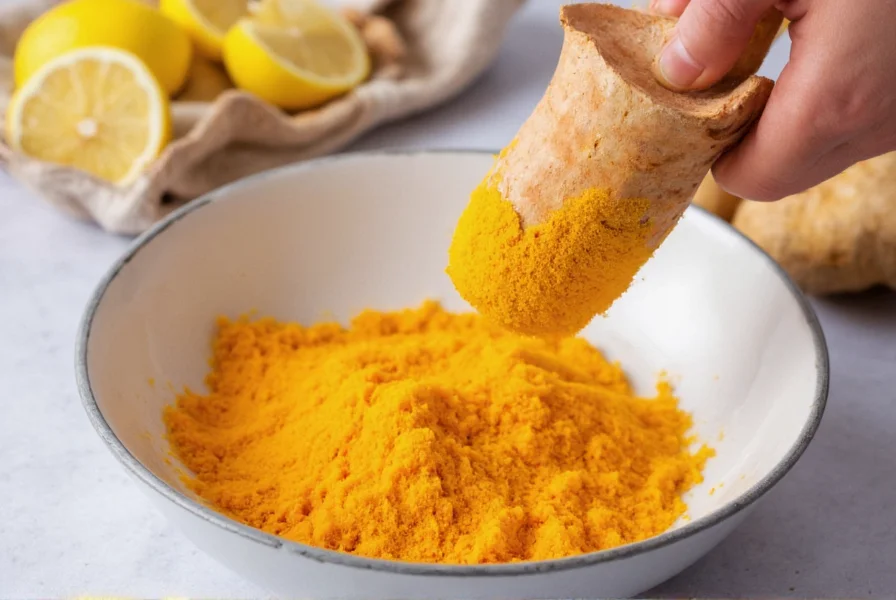Here's a simple turmeric juice recipe: Peel and grate 1 inch of fresh turmeric root and 1 inch of ginger. Squeeze juice from 1 lemon. Blend with 1 cup of water and 1 teaspoon of honey (optional). Strain through a fine mesh sieve. Drink immediately for maximum benefits. This anti-inflammatory turmeric drink provides a powerful health boost when consumed daily on an empty stomach.
Making turmeric juice at home is one of the most effective ways to harness the powerful anti-inflammatory properties of this golden spice. Unlike store-bought versions that often contain additives and reduced potency, homemade turmeric juice delivers maximum curcumin—the active compound responsible for turmeric's health benefits. This easy turmeric detox drink requires minimal ingredients and preparation time, making it accessible for anyone seeking natural wellness solutions.
Why Turmeric Juice Deserves a Place in Your Daily Routine
Turmeric has been used for centuries in Ayurvedic medicine for its remarkable healing properties. Modern research confirms that curcumin, turmeric's primary active component, possesses potent anti-inflammatory and antioxidant effects. When consumed as fresh juice rather than powder, you benefit from higher bioavailability and more complete nutrient profile. This golden milk alternative juice provides a concentrated dose of wellness that supports joint health, boosts immunity, and promotes digestive wellness.
Essential Ingredients for the Perfect Turmeric Juice
The quality of your ingredients directly impacts the effectiveness of your turmeric ginger lemon juice. Here's what you'll need:
| Ingredient | Amount | Why It Matters |
|---|---|---|
| Fresh turmeric root | 1 inch piece | Higher curcumin content than powdered turmeric; more natural compounds |
| Fresh ginger root | 1 inch piece | Enhances absorption of curcumin; adds digestive benefits |
| Fresh lemon juice | 1 whole lemon | Provides vitamin C which increases curcumin absorption |
| Filtered water | 1 cup | Dilutes potency for better taste while maintaining benefits |
| Black pepper | Pinch (1/8 teaspoon) | Piperine dramatically increases curcumin absorption |
Step-by-Step Preparation Guide
Follow these simple steps for the best homemade turmeric juice for immunity:
- Prepare ingredients: Wash and peel 1 inch of fresh turmeric root and 1 inch of ginger. The peeling is essential as the skin can be bitter.
- Grate ingredients: Use a fine grater to process both roots. This releases more juice and active compounds than chopping.
- Add supporting ingredients: Place grated roots in a blender with freshly squeezed lemon juice, 1 cup of water, and a pinch of black pepper.
- Blend thoroughly: Process on high for 1-2 minutes until completely smooth.
- Strain carefully: Pour through a fine mesh strainer or cheesecloth to remove fibrous particles.
- Serve immediately: Drink fresh for maximum potency. Turmeric juice loses effectiveness when stored.

Popular Variations to Enhance Your Turmeric Juice
While the basic recipe delivers excellent benefits, these variations can address specific health goals:
- Immunity booster: Add 1/2 teaspoon of cinnamon and a small clove of garlic for enhanced immune support
- Detox version: Include 1/2 cup of fresh pineapple for additional enzymes and bromelain
- Soothing evening drink: Replace water with warm almond milk for a golden milk alternative juice
- Metabolism accelerator: Add a dash of cayenne pepper to stimulate circulation
Optimal Consumption Guidelines
For maximum benefits from your turmeric juice recipe, follow these evidence-based recommendations:
- Best time to drink turmeric juice: On an empty stomach, 20-30 minutes before breakfast
- Ideal serving size: 4-6 ounces daily (approximately 1/2 to 3/4 cup)
- Frequency: Daily for chronic inflammation; every other day for maintenance
- Avoid consuming with: Iron supplements (turmeric inhibits iron absorption)
Safety Considerations and Potential Side Effects
While turmeric juice offers numerous health benefits, understanding turmeric juice side effects is crucial for safe consumption:
- Blood thinning: Turmeric has natural anticoagulant properties. Avoid if taking blood thinners or before surgery.
- Digestive sensitivity: High doses may cause stomach upset in sensitive individuals. Start with smaller amounts.
- Gallbladder concerns: May worsen gallstone conditions. Consult your doctor if you have gallbladder issues.
- Pregnancy: Moderate culinary use is generally safe, but therapeutic doses should be avoided during pregnancy.
Always consult with your healthcare provider before adding therapeutic amounts of turmeric to your diet, especially if you have existing health conditions or take medications. The how to make turmeric juice at home process should prioritize safety alongside benefits.

Frequently Asked Questions
How long does homemade turmeric juice last in the refrigerator?
Freshly made turmeric juice maintains optimal potency for only 24 hours when stored in an airtight container in the refrigerator. After this time, the curcumin content significantly decreases. For best results, prepare and consume your turmeric ginger lemon juice immediately. If you must store it, add a squeeze of lemon juice which helps preserve the active compounds slightly longer.
Can I use turmeric powder instead of fresh root in my juice recipe?
While fresh turmeric root provides superior benefits, you can substitute with turmeric powder using 1/2 teaspoon of powder for every inch of fresh root. However, fresh root contains higher curcumin levels and additional beneficial compounds not found in powder. Powdered versions also lack the natural enzymes that enhance absorption. For the most effective anti-inflammatory turmeric drink, fresh root is always preferable.
Why is black pepper essential in a turmeric juice recipe?
Black pepper contains piperine, which increases curcumin absorption by up to 2000%. Without this crucial addition, your body absorbs less than 1% of the curcumin in turmeric. A simple pinch (about 1/8 teaspoon) of freshly ground black pepper makes a dramatic difference in the effectiveness of your homemade turmeric juice for immunity. This is why quality fresh turmeric root juice recipes always include black pepper.
What are the signs I'm consuming too much turmeric juice?
Consuming excessive turmeric juice may cause digestive upset, acid reflux, or diarrhea. Some people experience skin rash or headache. The recommended daily limit is 1.5-3 grams of turmeric root, which translates to approximately 1-2 servings of standard turmeric juice recipe. If you notice any adverse effects, reduce your intake immediately. Remember that more isn't always better when it comes to potent natural remedies like this easy turmeric detox drink.
Can turmeric juice help with specific inflammatory conditions?
Research suggests turmeric juice may help reduce symptoms of osteoarthritis, rheumatoid arthritis, and other inflammatory conditions due to curcumin's potent anti-inflammatory properties. Many users report decreased joint pain and improved mobility after consistent consumption of this anti-inflammatory turmeric drink. However, it should complement—not replace—medical treatment. Always discuss using turmeric juice for inflammation with your healthcare provider, especially if you're taking anti-inflammatory medications.











 浙公网安备
33010002000092号
浙公网安备
33010002000092号 浙B2-20120091-4
浙B2-20120091-4